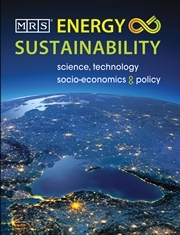Article contents
Concerning the global-scale introduction of renewable energies: Technical and economic challenges
Published online by Cambridge University Press: 02 July 2014
Abstract
The paper argues that solar photovoltaic or wind systems would need to be implemented at a rate of hundreds of gigawatts each year to obviate the continuing worldwide growth of fossil-fueled electricity generation. It suggests that an electricity consumption tax could constitute a sustainable mechanism for funding such an endeavor.
It is observed that the atmospheric content of carbon dioxide rose by approximately 16 Gt in 2012. A non-negligible contribution to this increase must surely have come from the 35 Gt of CO2 emitted by fossil fuel consumption that year, of which 11 Gt came from fossil-fueled electricity generation (FFEG). Yet, new FFEG plants continue to be built. Although it is questionable whether economic forces would permit a halt to the construction of such plants, it is argued that, from the perspectives of technology, manufacturing capability, land availability, and cost, it could be feasible to use solar photovoltaic and wind plants to provide for the annual increase in the worldwide need for electricity. However, the required capital expenditure cost of approximately US$ 0.5 trillion per year might be difficult to raise by conventional methods for funding renewable energy plants. A number of alternative funding mechanisms are examined. Among them, an electricity consumption tax is found to be capable of providing an assured amount of regular funding on this scale. In North America and Europe, such a tax would add approximately 1 US¢/kWh to present electricity tariffs. In other regions, it would amount to an addition of 2–5 US¢/kWh.
Keywords
- Type
- Review
- Information
- Copyright
- Copyright © Materials Research Society 2014
References
REFERENCES:
- 5
- Cited by


